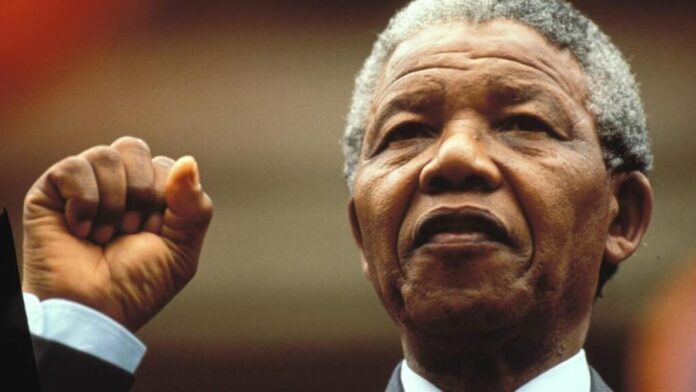Nelson Mandela, born on July 18, 1918, in Qunu, South Africa, was a prominent anti-apartheid activist, revolutionary, and the first black head of state in South Africa. Mandela’s life was marked by his tireless struggle for equality, his unwavering commitment to ending racial segregation, and his efforts to establish a democratic, multiracial South Africa. This detailed article will delve into the life and legacy of Nelson Mandela, exploring his early years, political activism, imprisonment, presidency, and post-presidential life.
- Early Life and Education
Nelson Mandela was born into the Thembu royal family in the village of Qunu in the Eastern Cape of South Africa. His father, Gadla Henry Mphakanyiswa, was a local chief and counselor to the monarch. After the death of his father when Mandela was nine years old, he was placed under the guardianship of Jongintaba Dalindyebo, the acting regent of the Thembu people.
Mandela attended a local mission school, where he was given the English name “Nelson” by a teacher. He later attended Clarkebury Boarding Institute and Healdtown Methodist Boarding School, where he excelled academically and developed an interest in African history and politics. In 1939, Mandela enrolled at the University of Fort Hare to study law but was expelled for participating in a student protest.
- Political Activism and the African National Congress (ANC)
In 1941, Mandela moved to Johannesburg, where he worked various jobs and completed his Bachelor of Arts degree through correspondence. In 1944, Mandela joined the African National Congress (ANC) and co-founded the ANC Youth League, an organization aimed at mobilizing young Africans in the struggle against apartheid.
Mandela became increasingly involved in anti-apartheid activities, organizing protests and advocating for civil disobedience against unjust laws. In 1952, Mandela, along with Oliver Tambo, opened South Africa’s first black law firm, providing free or low-cost legal counsel to black South Africans affected by apartheid legislation.
- Arrest, Imprisonment, and the Rivonia Trial
In 1960, following the Sharpeville Massacre, the South African government declared a state of emergency and banned the ANC. Mandela went underground and co-founded Umkhonto we Sizwe (Spear of the Nation), the armed wing of the ANC. In August 1962, Mandela was arrested and sentenced to five years in prison for inciting workers’ strikes and leaving the country illegally.
During his imprisonment, police raided an ANC safe house in Rivonia, uncovering documents linking Mandela to acts of sabotage. This led to the infamous Rivonia Trial, where Mandela and several other ANC leaders were tried for treason. In 1964, Mandela was sentenced to life imprisonment and sent to Robben Island, where he would spend 18 years.
- Release from Prison and the Road to Democracy
In the late 1980s, international pressure and growing unrest within South Africa led the government to reconsider its stance on apartheid. In February 1990, newly-elected President F.W. de Klerk announced the unbanning of the ANC and the release of Mandela. After 27 years in prison, Mandela was freed on February 11, 1990.
Mandela immediately resumed his leadership role in the ANC, engaging in negotiations with de Klerk’s government to dismantle apartheid and establish a multiracial democracy in South Africa. In 1993, Mandela and de Klerk were jointly awarded the Nobel Peace Prize for their efforts to bring about a peaceful transition to democracy.
- Presidency and Reconciliation Efforts
In 1994, South Africa held its first democratic elections, and Nelson Mandela was elected as the country’s first black president. Mandela’s presidency was marked by his commitment to national unity, reconciliation, and social justice. He established the Truth and Reconciliation Commission (TRC) to investigate human rights abuses committed during the apartheid era and promote forgiveness and healing among South Africans.
Mandela also focused on rebuilding South Africa’s economy, addressing the vast disparities in wealth and opportunity that had been entrenched by decades of apartheid. He implemented policies aimed at alleviating poverty, improving access to healthcare and education, and promoting racial and social integration.
- Post-Presidential Life and Legacy
After serving one term as president, Mandela stepped down in 1999 and devoted his post-presidential life to humanitarian work and advocacy. He established the Nelson Mandela Foundation and the Mandela Rhodes Foundation, focusing on issues such as HIV/AIDS, education, and peacebuilding.
Mandela’s health began to deteriorate in his later years, and he passed away on December 5, 2013, at the age of 95. His death was met with an outpouring of grief and tributes from around the world, highlighting the global impact of his life and legacy.
Conclusion:
Nelson Mandela’s life is a testament to the power of perseverance, determination, and an unwavering commitment to justice and equality. His struggle against apartheid, his 27-year imprisonment, and his eventual rise to the presidency of South Africa serve as an enduring symbol of hope and inspiration for millions around the world. Mandela’s legacy continues to resonate today, reminding us of the importance of standing up against injustice, fostering reconciliation, and working together to build a more equitable and inclusive future.
